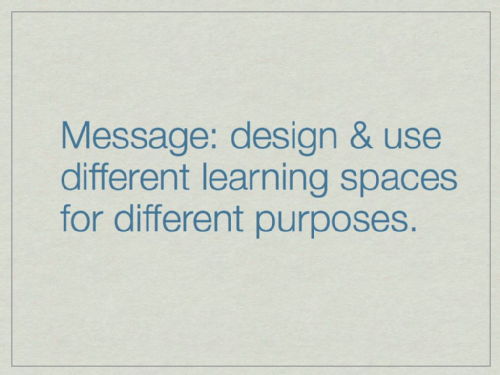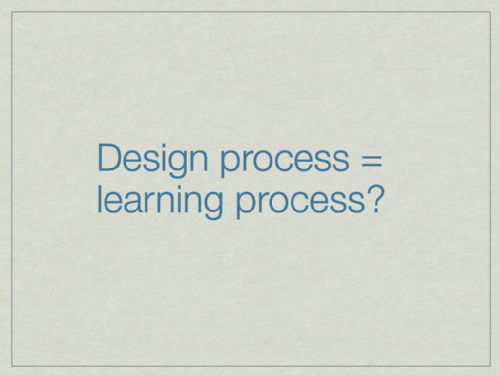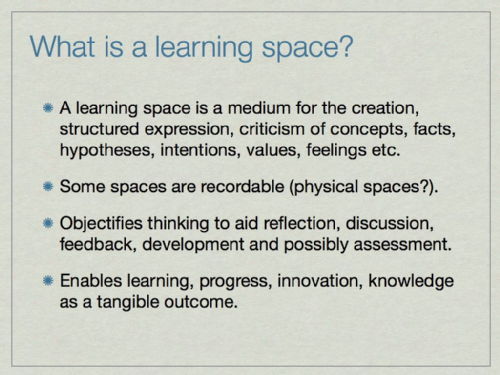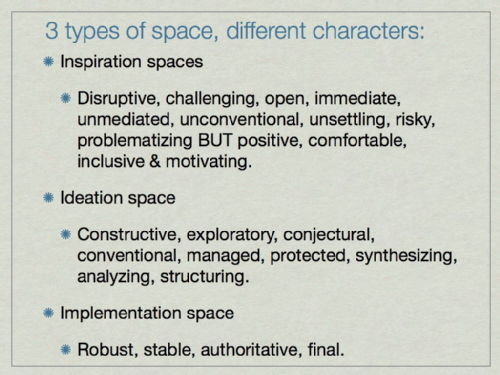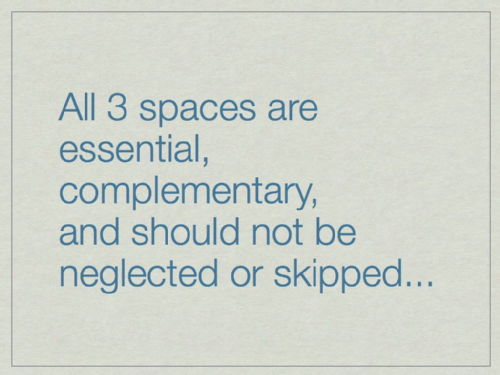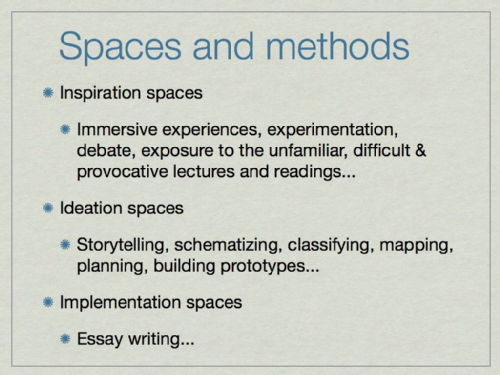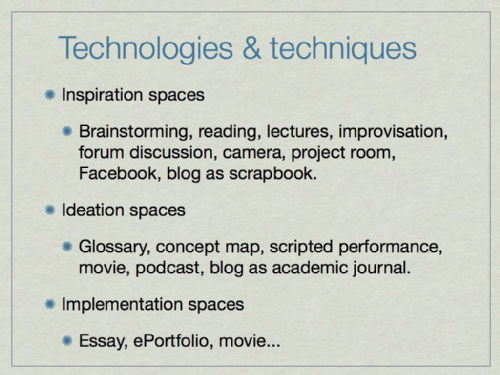Challenging Traditional Assumptions and Rethinking Learning Spaces – Nancy Chism
In the opening chapter of the Educause e-book on Learning Spaces1, Nancy Chism efficiently marshalls the key arguments that underpin the various trends in new learning space design. Evidence from environmental psychology and cognitive theory is only briefly mentioned:
Environments that provide experience, stimulate the senses, encourage the exchange of information, and offer opportunities for rehearsal, feedback, application, and transfer are most likely to support learning. s.2.4
Content-transmission oriented learning spaces (usually those with a rigidly defined single point of focus) are identified as being contrary to and blocking the ambitions of social constructivist pedagogy.
However, Chism is more concerned to demonstrate a conflict between the constraints offered by traditional learning spaces and our new kinds of learners:
The entry of large numbers of previously underrepresented students—students from ethnic cultures that stress social interaction, older students, students blending work and learning—also calls for environments in which social interchange and experiential learning are valued. s.2.5
There is then an impact upon efforts to widen participation. And worse still, more common varieties of student (young, wealthy, gadget loaded) are equally alienated:
The argument doesn’t include just nontraditional students, however. Characterizations of Net Generation students extend similar considerations to current traditional students in reinforcing the need for social space and technology access.
Chism goes on to describe the kinds of learning space in which the Net Gen might feel at home (sounds just like Warwick's Learning Grid), followed by an exploration of the key characteristics if spaces that could be designed to meet these needs: flexibility, comfort, sensory stimulation, technology support, decenteredness, the studio classroom, information-commons/collaboratory, living-learning spaces, corridor niches. "Technology support" refers to the need for a continuum of technology across space and time. "Decenteredness" is a concept deserving of much more attention: do we really mean decentered spaces, or rather spaces in which concentratory spaces can be constituted and dissipated as required? This lends itself to a more sophisticated understanding of space and cognition (cue Deleuze and Guattari).
The closing sections of the chapter consider practical and strategic concerns: given the massive investment in existing learning infrastructure, how might change be possible?
The cultural change required in thinking of space in a new way should not be underestimated. s.2.9
Chism gives some good basic advice. The trick is to start exploiting whatever small opportunities present themselves. The current refurbishments of Humanities Building seminar rooms are a good example of this opportunism.
However, to achieve more significant progress requires a deeper and more fundamental shift, which may only be achieved with much sound reasoning and evidence. Chism stresses the need for research (begging the rhetorical question: "you're already making big claims, but you say that real research is needed?"):
...we need more research on the impact of existing and experimental spaces on learning. We need basic research on the influence of the physical environment on creativity, attention, and critical thinking. We need applied research on
the effect of different kinds of lighting and furniture on comfort, satisfaction, and interaction. s.2.10
Taking this as a starting point, I will argue that we need much more than that: the research needs to be founded upon a comprehensive, joined-up, robust theoretical and methodological basis for the representation, design, implementation, observation, testing and comparative evaluation of learning spaces.
________
1Oblinger, D. Learning Spaces, Educause e-book, 2006 (available for download at http://www.educause.edu/learningspaces)
 Robert O'Toole
Robert O'Toole

 Please wait - comments are loading
Please wait - comments are loading


